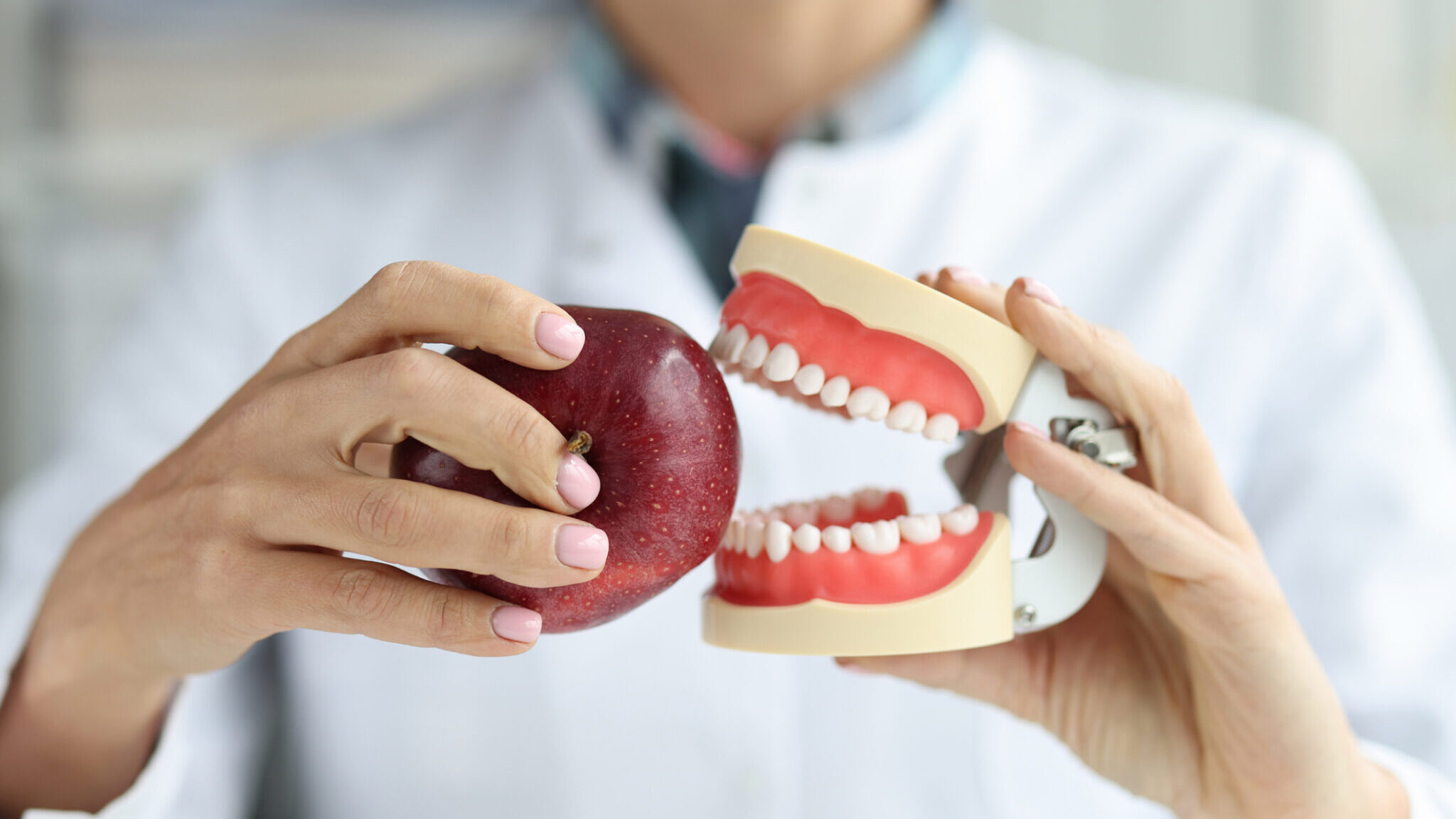
Musculoskeletal disorders are unfortunately affecting many dental professionals.
A recent systematic review shows the prevalence of general musculoskeletal pain ranging from 64%–93%.⁵ This issue happens as a result of the awkward positions that are held for 6-8 hours during a typical workday. Additionally, there are several other risk factors that come with working in the dental field. Muscle imbalances occur when one muscle group begins to compensate due to overuse, causing another muscle group to become weaker.1,4 There are two common imbalances that dental professionals should be aware of.
The upper crossed syndrome
The upper crossed syndrome is a muscle imbalance that happens often due to poor posture. The “crossed” in upper crossed syndrome refers to the crossing pattern of the overactive muscles with the counter crossing of the underactive muscles. 1,4
The underactive muscles need to be strengthened for endurance with specific exercises. These muscles are the mid/lower trapezius, deep cervical flexors, rhomboids and serratus anterior.1,4 Poor postures put increased stress on the head, neck and shoulder joints.2,4 This will cause the sternocleidomastoid muscle, the upper trapezius and pectoralis muscles to tense up from constant overuse.1,4 These muscles need to be released and relaxed in order to get more flexibility and mobility to the area. Use of a foam roller, weekly massages and stretches are effective ways to do this.
Specific risk factors and how to control them
Forward head posture is seen frequently while the clinician is trying to gain visual access of the oral cavity.² To prevent this, the headrest or patient chair needs to be adjusted properly so that the occlusal plane is positioned for direct or indirect vision utilizing the mirror.² The patient chin should be tilted down slightly for treatment on the mandibular arch and tilted up for the maxillary arch.² Ideally, the clinician should work on looking down with the eyes and keep the ears in line with the shoulders to stay in a neutral posture.² In addition to a forward head, rounded shoulders are also common. Ideally, the clinician should roll the shoulders back and down with the core engaged before starting treatment on the patient. This is where endurance training comes into play.
Lower crossed syndrome
Today, lower crossed syndrome is common among people who are sedentary or who are often in a seated position for most of their day.1,4 This produces a pattern of under and overactive muscles in both the front and the back of the hip region. The hip flexors become overactive and tight as well as the mid to lower back (erector spinae and latissimus dorsi). In contrast, some underactive and weakened muscles include the gluteus maximus, medius, transverse abdominis and internal oblique.1,4
Specific risk factors and preventative measures
Dental professionals spend most of their time in the clinical chair, working on a patient. The clinician chair may not support the lumbar curvature of the back. This may cause hunched over posture or excessive pelvic tilt. Saddle chairs are great investments for clinicians because they allow the pelvis to be in a neutral position, which is better on the spine.2,3 Clinicians need to be mindful of repetitive twisting of the torso as well.
Practice creates positive habits
Although dentistry is very demanding on the body, it is also very rewarding. Being aware and familiar with the musculoskeletal disorders and imbalances will help prevent an injury before it occurs. With the right ergonomics, equipment, body mechanics and other modalities, it is possible to have a pain free and long-lasting career.
References
- Sutton BG. NASM Essentials of Personal Fitness Training. 7th ed. Jones & Bartlett Learning; 2022.
- Valachi B. Practice Dentistry Pain-Free : Evidence-Based Strategies to Prevent Pain and Extend Your Career. Posturedontics Press; 2008.
- Valachi B. Saddle up! The Ergonomic Benefits of Saddle-style Stools. Posturedontics.com. 2017. https://posturedontics.com/wp-content/uploads/2017/08/Saddle-stool.pdf.
- Miller K. Correcting Upper Crossed Syndrome. NASMORG. 2022. https://blog.nasm.org/correcting-upper-crossed-syndrome.
- Hayes MJ, Cockrell D, Smith DR. A systematic review of musculoskeletal disorders among Dental professionals. International Journal of Dental Hygiene. 2009;7(3):159-165. doi:10.1111/j.1601-5037.2009.00395.x
About the Author

Christina Lopez is a registered dental hygienist in Florida. She has been engaged in clinical work for more than 6 years. She loves educating her patients and the public on preventative oral-systemic care. With experience as a fitness trainer, she is a big advocate of overall health with a focus on body mechanics, ergonomics and wellness through exercise and nutrition. For more information contact her at liftwithlopez.com or on Instagram Dumbbellsmeetdentistry.












